Local scholars skeptical of Lost Tomb of Jesus claims
They don't believe the tomb ever belonged to Christ's family
By MIRKO PETRICEVIC
http://www.therecord.com/NASApp/cs/ContentServer?pagename=record/Layout/Article_Type1&c=Article&cid=1173221417239&call_pageid=1024322085509&col=1024322199564
The latest project to cast doubt on the bodily resurrection of Jesus Christ drew mixed reviews from a panel of local scholars.
The makers of Lost Tomb of Jesus "have a flood of very provocative data," John Miller said. "In their zeal to connect all the dots, they went too far."
Miller, a retired professor of biblical studies at Conrad Grebel University College in Waterloo, was one of three local academics yesterday to watch the film.
Lost Tomb of Jesus, a collaboration between Toronto filmmaker Simcha Jacobovici and Academy Award-winning director James Cameron, has sparked debate ever since it was broadcast in the United States and Britain last week. It made its Canadian debut last night.
The film asserts that odds are 600-1 that a collection of small limestone boxes, or ossuaries, found in Jerusalem in 1980 contained the bones of Jesus of Nazareth.
The filmmakers say names inscribed on the boxes -- Jesus son of Joseph, Judah son of Jesus, and Mary -- are probably those of Jesus Christ, his wife Mary Magdalene and their son Judah.
DNA testing of human residue found inside two of the boxes indicates that bones in the ossuaries were not related by blood, so they were probably married, the filmmakers say.
The panel viewing the film at The Record yesterday included Miller, Bill Klassen, retired professor at Waterloo's St. Paul's College, and Michele Daviau, professor of Near Eastern archeology at Wilfrid Laurier University.
None is convinced the Talpiot tomb belonged to Jesus of Nazareth's family.
Some challenged the filmmakers' assumptions when referring to New Testament genealogies of Jesus. Others said the parameters on the chemical analysis on ossuaries and DNA tests on human remains found inside were too narrow. Some challenged the filmmakers' reading of the ossuary inscription ascribed to Mary Magdalene.
On the other hand, the film does the world a service by highlighting the complexity of what happens when archeologists make a discovery, then try to make sense of it, Klassen said.
Throughout the viewing, many of the filmmakers' numerous arguments were followed by caveats by the panel.
For example, the Talpiot tomb is between Jerusalem and Bethlehem.
Daviau said a more likely site for a Jesus family tomb would be in Galilee, where Jesus lived most of his life.
"That's where the disciples supposedly go after Jesus rises," she said. "They go back to Galilee. They're not going to stay around Jerusalem. It's a dangerous place for them."
Also, Israelites at the time used different burial techniques, said Daviau, who has conducted archeological digs in Holy Land tombs.
Some bodies were buried in wood or lead coffins. Others were placed in tombs and, after decomposing, their bones were placed among those of relatives from several generations.
Ossuaries were heavily used in the Jerusalem-Jericho area, she said, and not widely used in Galilee.
One of the ossuaries in the Talpiot tomb was inscribed in Greek. The filmmakers make a case that it belonged to Mary Magdalene.
But Miller argues that part of the inscription could indicate the name Martha.
Each name found inscribed on the ossuaries was common in Israel at the time of Jesus.
But the filmmakers say the combination of names inscribed on the ossuaries, names associated with Jesus, make the odds at least 600-1 that the tomb belonged to the Holy Family.
There is an added twist.
In 2002, an Israeli antiquities collector revealed an ossuary inscribed with the words "James son of Joseph brother of Jesus."
The makers of Lost Tomb of Jesus say one of the 10 ossuaries from the Talpiot tomb disappeared. So they arranged for a forensic test of the patina, or chemical residue, covering the James ossuary and compared it to one of the ossuaries from the Talpiot tomb. They say both ossuaries came from the same tomb.
If so, they calculate the probability of the Talpiot tomb being Jesus Christ's would be 30,000-1.
But Daviau said the test was too limited. Researchers would need to inspect patina on all the ossuaries found in all Talpiot tombs.
It's possible the James ossuary came from the Talpiot region, but not the tomb in question, she said.
Also, she said, there is evidence the James ossuary was photographed in the 1970s, before the Talpiot tomb was uncovered.
The local scholars said their opinions were only for this slice in time.
As more information comes forth, they agreed, their opinions will change on various parts of the film.
Much more evidence is needed, Daviau said.
"Our opinions now are likely to change, but that doesn't mean they will reverse, necessarily."

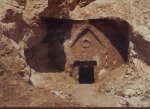
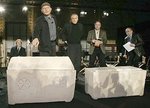






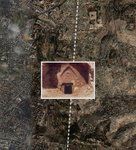


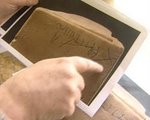






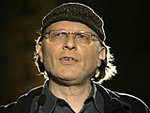

















No comments:
Post a Comment